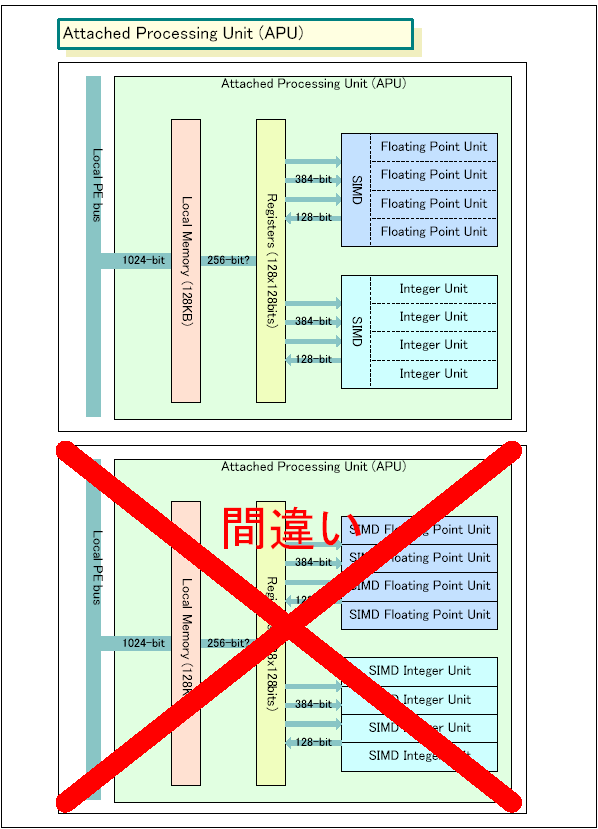Let's clarify that guesstimate diagram once more. I'm ignoring the integer units for now. I also don't care about the Processor Elements because they seem to be only for higher level organisation of the layout -- it's the APUs that matter here. I'm assuming Visualiser has half the number of APUs because it also has dedicated pixel rasteriser hardware and the eDRAM.
APU = each APU has 4 SIMD units, each SIMD unit has 4 FMAC units, each FMAC (multiply & accumulate) is 2 ops, so each APU does 32 ops per cycle.
Cell: 32 APUs = 1024 ops/cycle. At 1 GHz that's 1 TFLOPS.
Visualiser: 16 APUs = 512 ops/cycle. At 1 GHz that's 512 GFLOPS.
Those figures not including the rest of the hardware (FDIV and other more specific units). Who needs 2 or 4 GHz? 8)
(Putting this much ALUs and cache into a chip means that at 2+ GHz it gets so hot the PS3 comes inside a Sony fridge. The toaster pic ain't a complete joke...)
All excluding the math IMHO!
APU = each APU has 4 SIMD units, each SIMD unit has 4 FMAC units, each FMAC (multiply & accumulate) is 2 ops, so each APU does 32 ops per cycle.
Cell: 32 APUs = 1024 ops/cycle. At 1 GHz that's 1 TFLOPS.
Visualiser: 16 APUs = 512 ops/cycle. At 1 GHz that's 512 GFLOPS.
Those figures not including the rest of the hardware (FDIV and other more specific units). Who needs 2 or 4 GHz? 8)
(Putting this much ALUs and cache into a chip means that at 2+ GHz it gets so hot the PS3 comes inside a Sony fridge. The toaster pic ain't a complete joke...)
All excluding the math IMHO!


